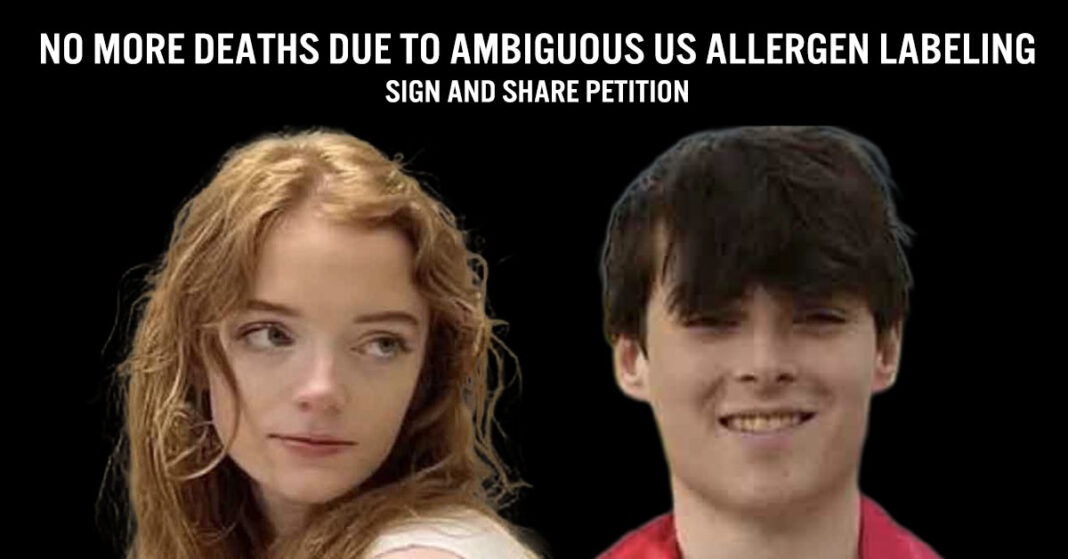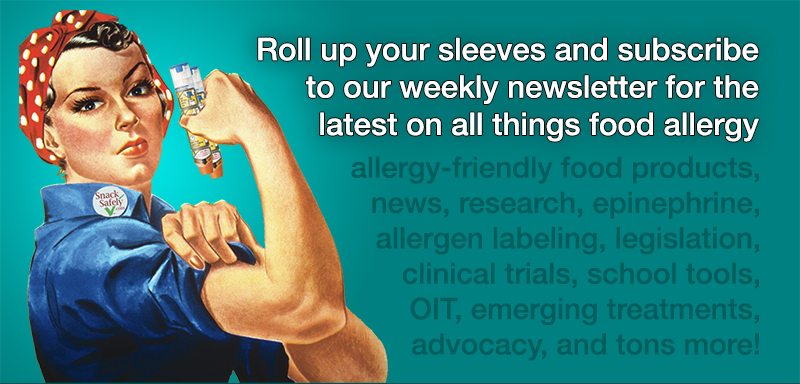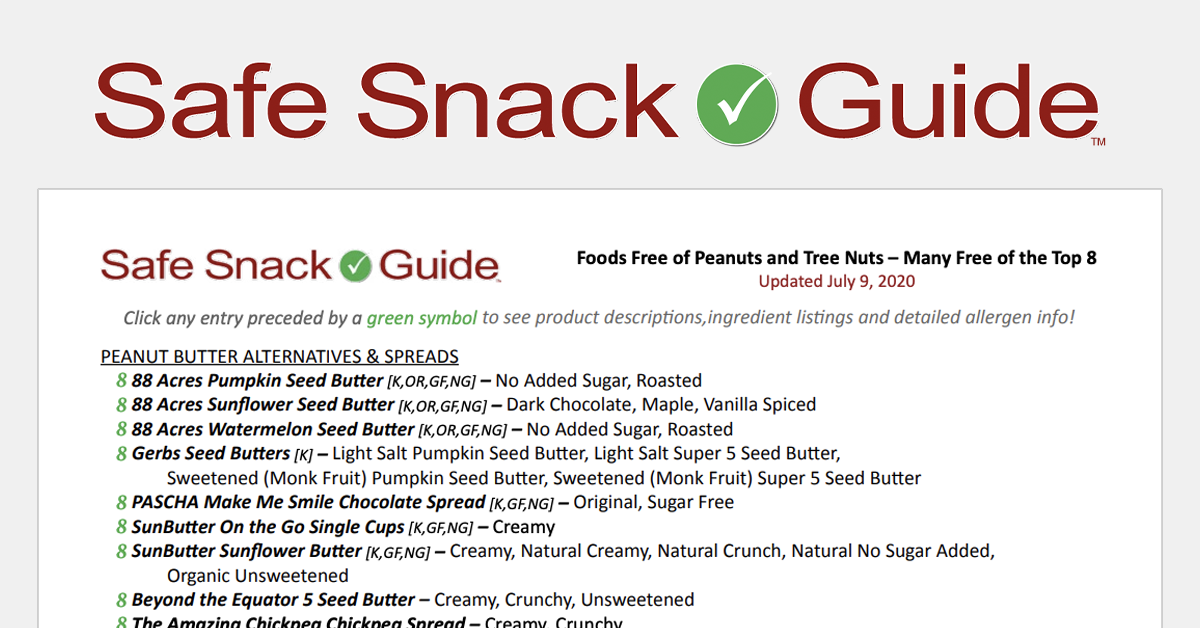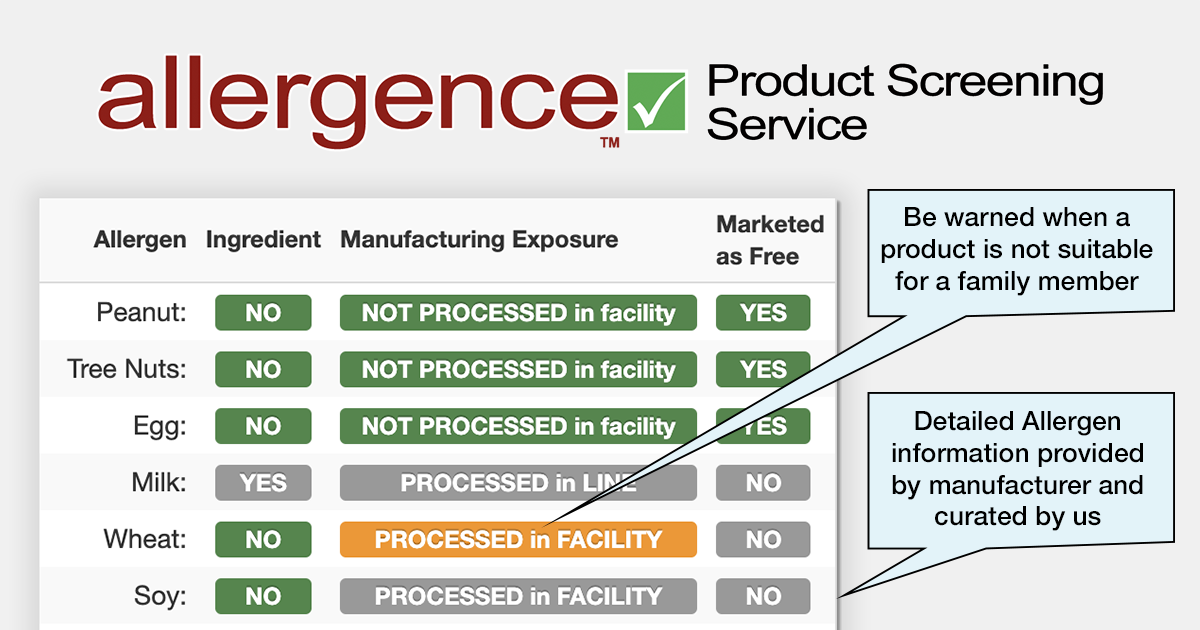The food allergy community has suffered many losses over the years due to ambiguous US allergen labeling regulations that first took effect in 2006.
Many victims of the current labeling regime were careful about reading labels and would have avoided the products that led to their deaths had they known they were about to consume foods made in facilities where their allergens were processed.
Recent tragic examples include 22-year-old Timmy Howard, who graduated from college just days before and reportedly succumbed to anaphylaxis caused by peanut trace in a snack, and 25-year-old Órla Baxendale, a dancer from the UK who consumed a cookie that contained undisclosed peanuts, subsequently suffered anaphylaxis, and died. By all accounts, both were meticulous in avoiding products made in facilities where peanuts are processed, and would likely have avoided these products had they known.
Enough is enough.
We desperately need changes to current food allergy labeling regulations to stop these needless and preventable deaths.
To that end, we have started a new petition to the FDA Commissioner, demanding that they implement four straightforward changes that, together, will make allergen labeling much safer for the allergic community. We will periodically print the list of signers and deliver it to the FDA commissioner, reminding them we need action.
Here follows the text of that petition. We urge you to sign and share it with friends, family, coworkers and everyone else you think would be amenable to supporting it.
Don’t stand by… lend your support to effect these much-needed changes.
Urgent Call to FDA: Reform Dangerous Food Allergy Labeling Ambiguity NOW!
To the Commissioner of the US Food and Drug Administration:
We, the undersigned members of the food allergy community, representing millions of individuals, families, and advocates, urgently call for immediate action to address critical deficiencies in current US food allergen labeling regulations. Since the Food Allergy Labeling and Consumer Protection Act (FALCPA) took effect in 2006, our community has consistently struggled with vague, ambiguous, and insufficient allergen disclosures. This ongoing lack of clarity leads to inadvertent exposures, severe allergic reactions, and preventable medical emergencies, placing an unacceptable burden on consumers trying to manage life-threatening conditions.
To safeguard public health and uphold the fundamental right of consumers to accurate information, we demand the following essential and achievable changes be implemented into current allergen labeling regulations:
1) Mandate the “Contains” statement
Today, “Top 9” allergen disclosures may be made in either of two ways, injecting unnecessary ambiguity that confuses consumers to this day.
The first option for food manufacturers is to include the name of the food source in parenthesis following the common name of the major food allergen in the list of ingredients in instances when the name of the food source of the major allergen does not appear elsewhere in the ingredient statement.
For example:
Ingredients: Enriched flour (wheat flour, malted barley, niacin, reduced iron, thiamin mononitrate, riboflavin, folic acid), sugar, partially hydrogenated soybean oil, and/or cottonseed oil, high fructose corn syrup, whey (milk), eggs, vanilla, natural and artificial flavoring) salt, leavening (sodium acid pyrophosphate, monocalcium phosphate), lecithin (soy), mono-and diglycerides (emulsifier)
This fragmented disclosure forces the consumer to scan a difficult-to-read ingredient list to determine whether their Top 9 allergen of concern is an ingredient of the product.
The second option is to place the word “Contains” followed by the name of the food source from which the major food allergen is derived, immediately after or adjacent to the list of ingredients. For example:
Contains Wheat, Milk, Egg, and Soy
ACTION: Mandate the exclusive use of the “Contains” statement to eliminate this ambiguity and make it easier for consumers to determine whether a Top 9 allergen is an ingredient of the product.
2) Mandate a “Top Allergens Processed in Facility” statement
Precautionary allergen label warnings like “May contain traces of almonds” or “Manufactured in a facility that also processes wheat” are entirely voluntary; current regulations say nothing about when they should be used, how they should be worded, or where they should appear.
Some manufacturers include such warnings, many major manufacturers don’t, and others will warn for one allergen (say peanuts) and not for another (say soy). Their absence does not mean the product is safe from potential cross-contact with an allergen, despite widespread misconceptions.
Action: Mandate a single advisory appear on the label whenever a top allergen is processed in the same facility but is not an ingredient of the product. We prefer:
Top Allergens Processed in Facility: peanuts, soy.
3) Mandate the labeling of all ingredients, including spices, flavors, colors, and additives
The FDA allows many ingredients in a product to be disclosed under broad categories, including spices, natural flavors, and colors. Many of those ingredients may, in fact, be allergens to a segment of the allergic community.
Every consumer has the right to know exactly what ingredients are in a food product at the time of purchase, to protect themselves from inadvertent exposure to an allergen.
ACTION: Mandate ALL ingredients be individually disclosed under their commonly known names.
4) Extend the recognized Top 9 allergens based on updated, continually monitored criteria
Many in the community are allergic or intolerant to many foods beyond the Top 9. Other countries have much broader lists of top allergens that must be disclosed separately. For example, the European Union identifies 14 top allergens, including mustard, lupin, mollusks, and sulfur dioxide/sulfites not required under US labeling regulations.
ACTION: Establish and implement a dynamic, data-driven process for continually reviewing and updating the list of major food allergens requiring disclosure. This process must expand the current criteria beyond the initial 90% threshold to encompass a broader spectrum of clinically significant allergens, recognizing that the landscape of food allergies evolves. The updated list must be reviewed and revised on a mandatory, scheduled basis (e.g., every [e.g., three] years) to ensure it reflects current public health needs and international best practices.
In conclusion, the current inadequacies in U.S. food allergen labeling regulations represent a significant and preventable public health risk. They place an undue burden on individuals and families, forcing them to navigate a confusing and dangerous food environment. The essential actions outlined above are not merely improvements; they are critical, actionable steps that will profoundly enhance consumer safety, foster trust, and ultimately save lives within the food allergy community. We urge the Commissioner and the FDA to prioritize these vital reforms without delay.






I’m signing and pleading for these much needed label changes. An ingredient is either there or it’s not. It should not be any more complicated than that. If an allergen in the ingredients why would it not be called out in the precautionary warning section? I lost my son close to 11 years ago now for this very reason. It said contains almonds (which he wasn’t allergic to) in the warning statement. When in reality it contained almonds AND PEANUTS. But because peanuts was listed already in the ingredients list (close to the bottom of the list) then it isn’t considered necessary to add to the warning label because it’s already there. I was never told differently that may contain labeling was voluntary. This is what we knew 25 years ago. We did not have the resources we have now. Flash forward 2025 there are still so many that aren’t informed properly or are confused by our FDA labeling standards, hence why we continue to lose our beloved angels. This does not need to continue to happen. It is obscene that it continues to happen. Sometimes as simple as making a label clear and transparent. It’s there or it isn’t. BOLD print for top allergens. PERIOD!
Clear up the labels!
Please help us. Clear transparent labeling is so very needed! Over 10,000 signers to our 2021 petition on Change_dot_org, and us asking the fda, and politicians for help…and no change. Many petitions over the years have been done, with no change. My son is 18 now, and we have been hoping for change for those 18 years! We hope this time someone cares enough to help the food allergy community with this life saving and quality of life issue. An issue that is sadly and angrily one that is behind needless tragedies.
My son had a reaction to a Magnum ice cream bar, that said it was Non-Dairy (no mention of dairy in ingredients or if made on shared lines). Well, here we find out that “Non-Dairy does not mean that there is no dairy” in it and it may contain dairy! This needs to change. There should be one term, “Dairy Free”, it is either free of dairy or it isn’t.
We live in a constant Russian Roulette game. We have to call companies before eating something new. We rely on labels and check them when buying at the store, before an item gets into our kitchen and can only hope that restaurants are triple checking as well… but it only can go so far if the label isn’t transparent or clearly states if allergens are present (at any amount!) Upon food challenges with CHOP allergy, he reacts with anaphylaxis to even the smallest dusting. We know that this confusion with labels makes eating out dangerous as well as eating at home. Chefs and restuarants too, need to easily see if a food is safe for those with allergies. Our daily quality of life, is greatly impacted by this and we ask you to make a few simple changes.
All ingredients should be identified. Top allergens especially should be in bold. May Contains statements should be mandatory…and an item should not say non-dairy if it’s not. Period. Please help us. -Marni, Tim & Liam Deimler
It is such an easy thing for companies to label their products with what it contains and just as easy to add “processed on the same line as [insert top allergens].” Consumers have no idea unless the companies tell us. They on the other hand know exactly what’s in their products and where they’re made and it would be the simplest thing to add a few words to packaging. This isn’t the 1900’s where very few people had food allergies; in the present many people are born with them or are developing them.
In addition to this it appears that to save money on labeling issues some manufacturers are deliberately putting small amounts of things like peanut flour in products so they can generalize the allergen.
Since the food allergy community already cannot buy common products it really is unfair that this practice limits purchases even further. It’s bad enough that children have to be singled out but to increase the odds of limiting choices is so unfair.